{Click on an image to enlarge, then use the back button to return to this page}
This page last updated on 02/16/2017
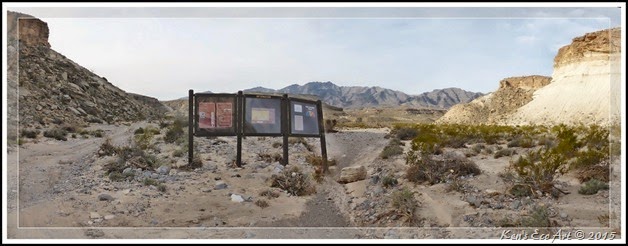 |
| (Fig. 01) |
|
 |
| (Fig. 02) |
|
| Directions: Dead Man Wash Road, the entrance to this area, is about 66 miles from Las Vegas. Drive north on Interstate-15 to the NV-168 exit, EXIT 90, toward Glendale/Moapa. Exit the interstate and drive northwest on Highway 168. Drive out 15.8 miles to an unmarked dirt road on the left. This is Dead Man Wash Road. The road follows Dead Man Wash across creosote-covered flats, and then runs down a canyon between two mesas (Fig. 01). The mesa on the right of (Fig. 02) and left-center of (Fig. 03) is Table Mountain, a 300-acre, disjointed part of the Arrow Canyon Wilderness Area. At 1.5 miles out, just before entering the Upper Pahranagat Wash, the road passes an information sign with maps and information about the area (Fig. 01). Two side roads diverge here to the right; stay to the left and head downstream to the parking area seen in (Fig. 04). |
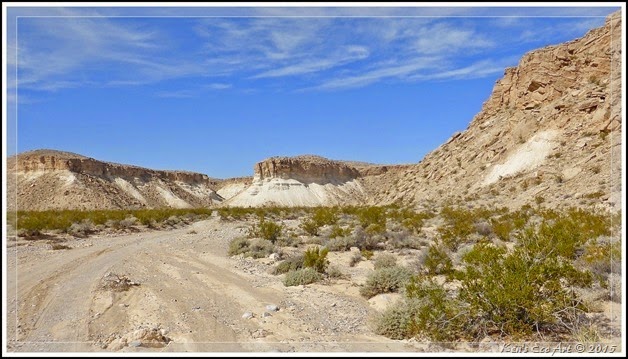 |
| (Fig. 03) |
|
 |
| (Fig. 04) |
|
| 02/20/2015 Trip Notes: Pahranagat Wash (and Arrow Canyon) run along the north eastern edge of the Arrow Canyon Wilderness Area, on the northern end of the Arrow Range. The elevations range from 2,500 to 5,200 feet, with the elevation at the lower end of the Pahranagat Wash being around 2,010 feet. Several deep side washes feed into this main wash leading to the Arrow Canyon Dam (Fig. 05), and is characterized by some interesting and unusual petroglyphs, most of which are on rock walls that lack patina, which is unusual. The wash is filled with a wide variety of desert brush including; creosote bush, white bursage, bull thistles, catclaw and saltcedar thickets. Some of these shrubs are nearly eight feet tall. The most amazing thing to see was that the entire surface of this wash was covered with several inches of thick, caked, dried out silt and mud. Backed up by the Arrow Canyon Dam at the south end of the wash (Fig 05), last spring’s heavy rains in the Moapa area turned this wash into a lake with nearly 6-8 feet of water. As the silt and mud at the bottom of the wash began to dry out, it created some of the most beautiful, natural patterns I have ever witnessed (Fig 06). In our quest to find some petroglyphs, we began our hike of the area by heading towards a large sand dune located slightly northeast of the parking area. We were rewarded by finding several petroglyphs on the boulders and cliffs above and behind the sand dune. Due to the fact that many of the glyphs found here and on the other side of the wash appear to be representative of Indian “war shields”, this area is often referred to as War Shield Canyon. |
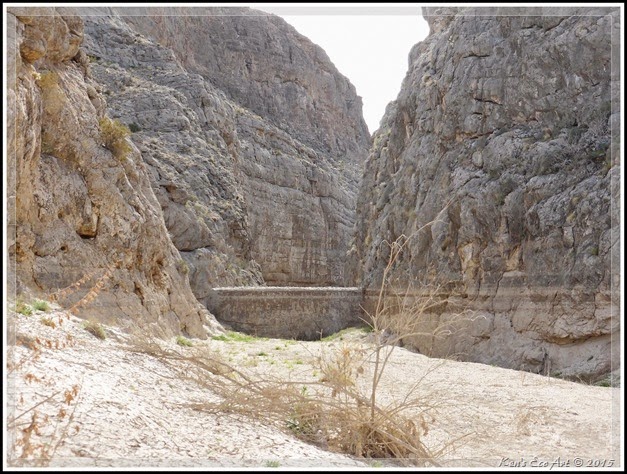 |
| (Fig. 05) |
|
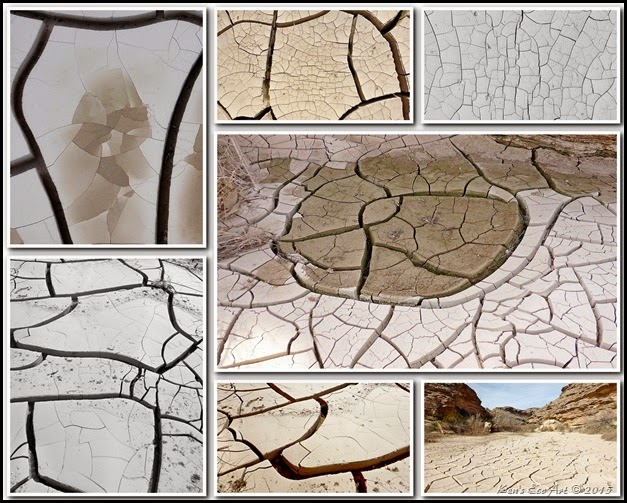 |
| (Fig. 06) |
|
| In our quest to find some petroglyphs, we began our hike of the area by heading towards a large sand dune located slightly northeast of the parking area (Fig. 04). When we reach the top of the dune, we were rewarded with several petroglyph panels (Figs. 07 thru 12) on the boulders and cliffs above and behind the sand dune. Due to the fact that many of the glyphs found here and on the other side of the wash appear to be representative of Indian “war shields”, this area is loosely referred to as War Shield Canyon. Shields, decorated with anything that would add power to the wearer and frighten off those who would do harm, were used by many Native American Indians. |
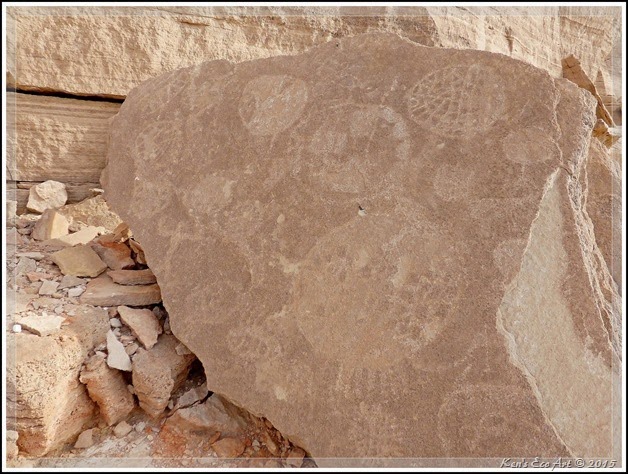 |
| (Fig. 07) |
|
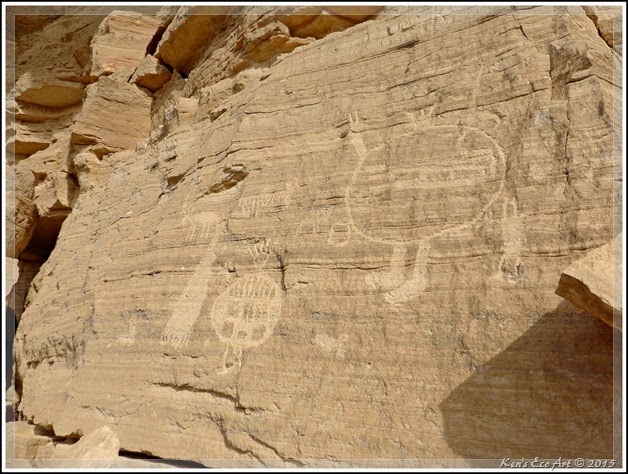 |
| (Fig. 08) |
|
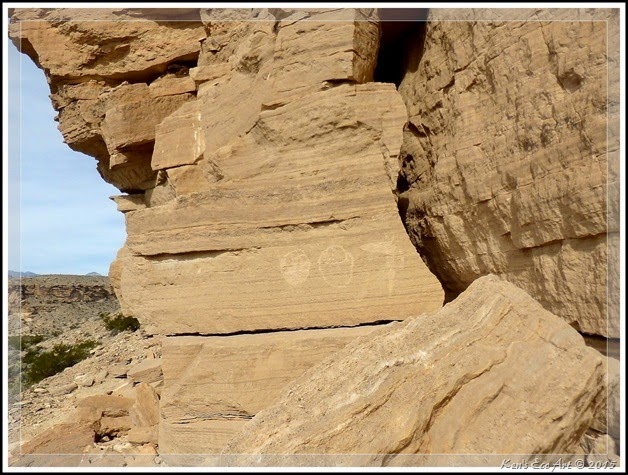 |
| (Fig. 09) |
|
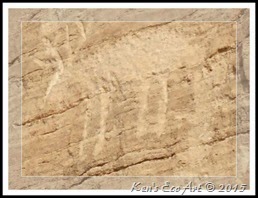 |
| (Fig. 10) |
|
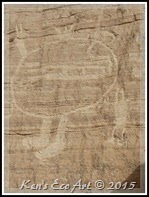 |
| (Fig. 11) |
|
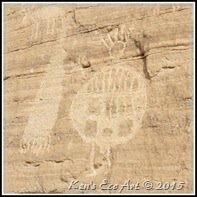 |
| (Fig. 12) |
|
Continuing down the wash past this spot we backtracked up a rather large side canyon where we thought we might find some more glyphs (Figs. 13-15). But after hiking up this canyon for what seemed like a considerable distance, we were unable to find any. Returning back to the wash we looked for an old shelter (Fig. 16) that someone had told us about. As it turned out we hiked along the top of it, and never saw it. It wasn’t until we were hiking down the old hillside road on the other side of the wash later on that we actually spotted it. Just past this area we encountered a fairly deep depression that appeared to be the result of a sink hole (Fig. 17). As you get to the southern end of the wash, the canyon narrows abruptly, and then shortly the old Arrow Canyon Dam appears (Fig. 05). As you can see, the face of the dam is quite steep, and there is no easy way to climb to the top or to climb around it. Placing my camera on the end of my monopod, I attempted to get a picture looking over the top of the dam into Arrow Canyon (Fig. 18), however the top is more than six feet wide and I couldn’t reach high enough to get a good picture. Standing near the base of the dam did provide a nice view looking back up Pahranagat Wash (Fig. 19). Notice in this picture the mud lined rim on both sides of the canyon walls indicating how high the water line was when the wash was full of water.
|
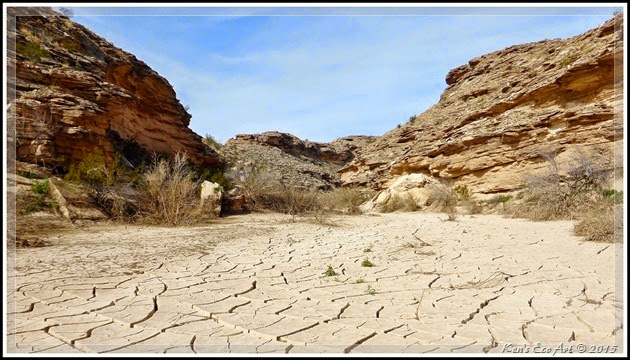 |
| (Fig. 13) |
|
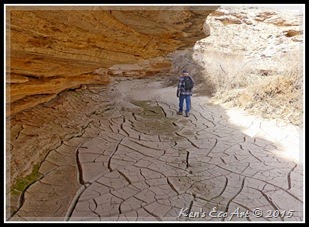 |
| (Fig. 14) |
|
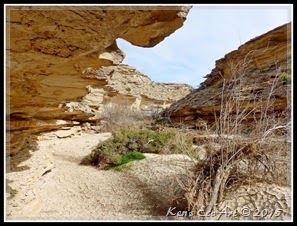 |
| (Fig. 15) |
|
|
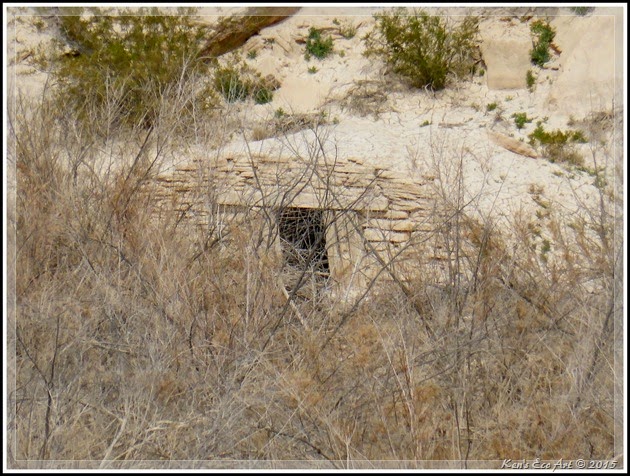 |
| (Fig. 16) |
|
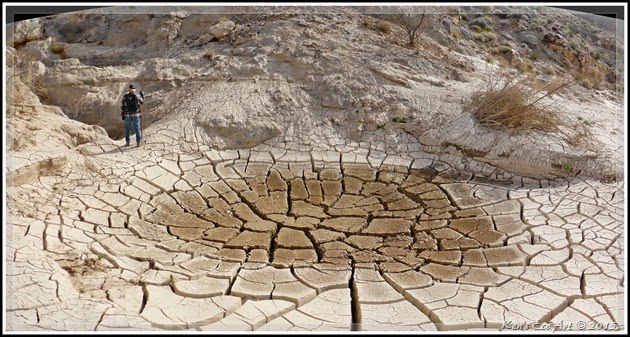 |
| (Fig. 17) |
|
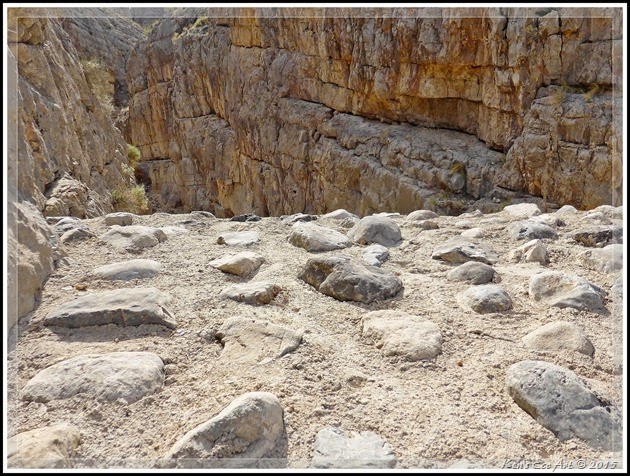 |
| (Fig. 18) |
|
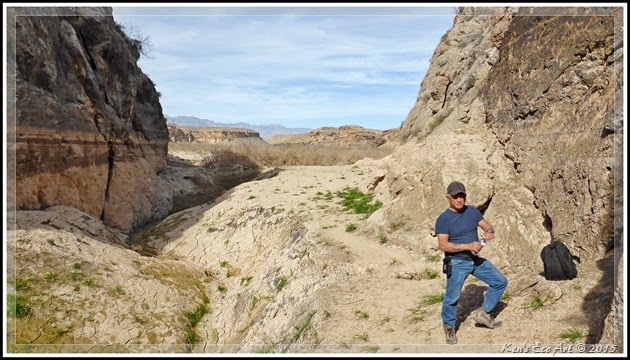 |
| (Fig. 19) |
|
| After visiting the dam, we decided to hike up to the “viewpoint” (Fig. 02). Heading back up the west side of the wash, we found the old road that cuts steeply up the cliffs along side of the wash. From the start of the old road to the top of the hill, the climb involves a 230 elevation gain. With a visible road or not, hike up the sandy hillside to the old road and the flats above. The view in (Fig. 20) was taken at about the halfway point where the road and trail seem to disappear. Once we reached the top, the views in every direction were grand. The picture in (Fig. 21) is Harvey’s “summit cairn”. The view southeast looked down into Arrow Canyon (Fig. 22). The view to the northwest look back out over the Pahranagat Wash with the north end of the Sheep Range in the background (Fig. 23). Though we had to get precariously close to the edge of the cliff, the view to the north gave us a glimpse 250 feet down to the top of the Arrow Canyon Dam (Fig. 24). These banded, jagged cliffs show nearly 200 million years of geologic history. The striking black layer, visible across the entire length of the western face, is early Mississippian Dawn Limestone that is about 350 millions years old. The dark color is from carbon in the rock. Fossils are common in the area, and it is possible to find crinoids, brachiopods, corals, and other marine organisms. Many of the fossils date to the Cambrian period, 500 million years ago, when these rocks were mucky sediments accumulating at the bottom of the ocean. I was amazed to find so many fossilized examples of ancient marine life at the very top of the viewpoint (Fig. 25). |
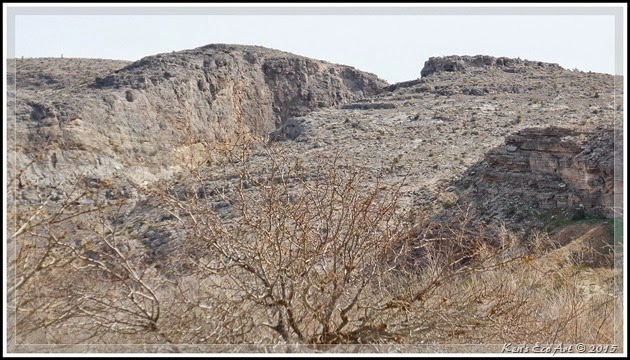 |
| (Fig. 20) |
|
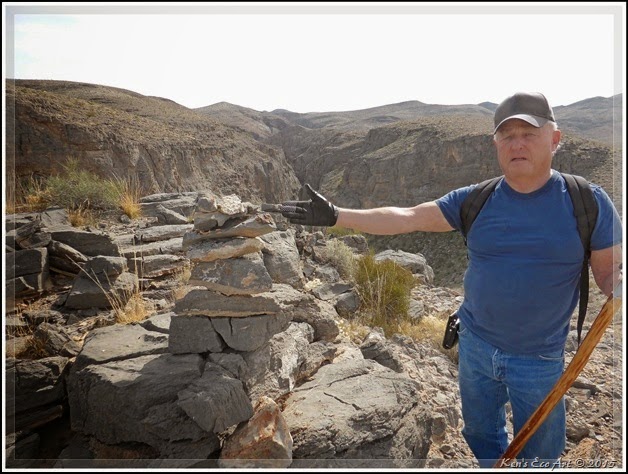 |
| (Fig. 21) |
|
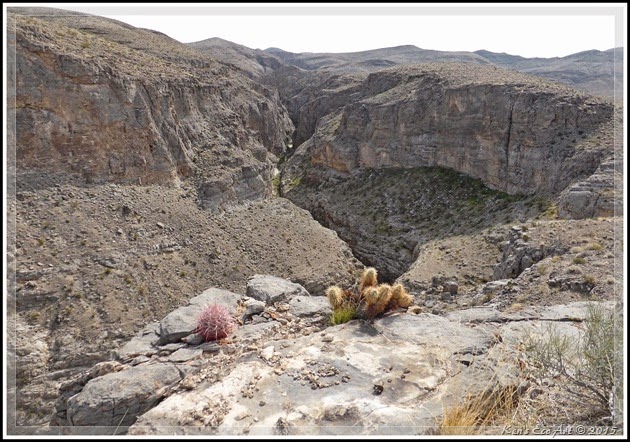 |
| (Fig. 22) |
|
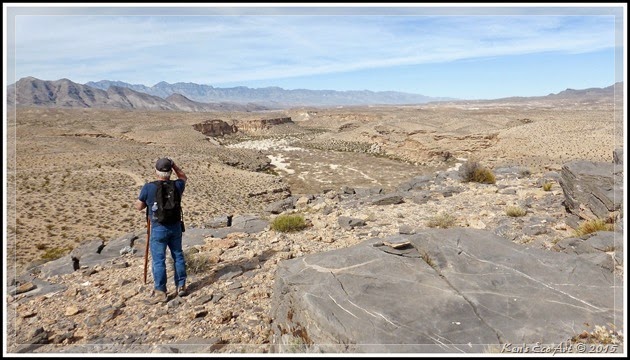 |
| (Fig. 23) |
|
 |
| (Fig. 24) |
|
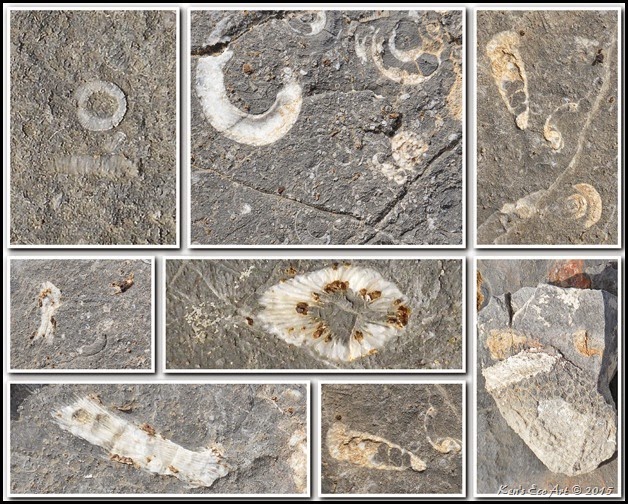 |
| (Fig. 25) |
|
| After hiking back down from Viewpoint we headed back up the west side of the wash to a canyon that is referred to as Warshield Canyon. There are three oddly shaped boulders on the left side of the canyon opening (Fig. 26) that are covered with some unusual, deeply carved glyphs (Figs. 27 thru 30). How these boulder pieces got there; whether they fell from the cliffs above or somehow washed down the canyon wash makes one wonder. The top edges of two of the are carved with a series of vertical lines that are underlined (Fig. 30). A few hundred yards into the canyon wash there is another rock panel (Fig. 31) that contained several more elaborately decorated “warshields”, as well as some anthropomorphic figures (Figs, 32 & 33). Unfortunately, a large portion of this panel is covered with mud, making several of them very difficult to discern. After viewing this area, we hiked back across the wash to the truck and had lunch before heading home (Fig. 34). |
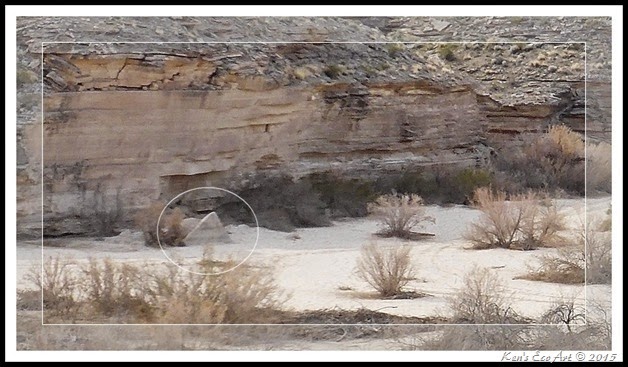 |
| (Fig. 26) |
|
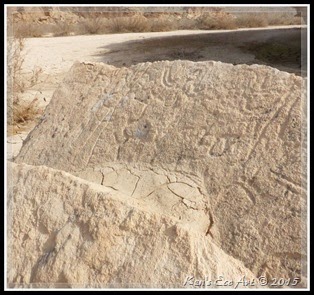 |
| (Fig. 27) |
|
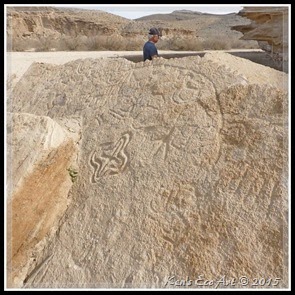 |
| (Fig. 28) |
|
|
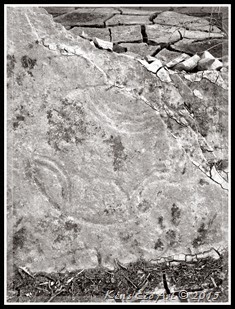 |
| (Fig. 29) |
|
 |
| (Fig. 30) |
|
|
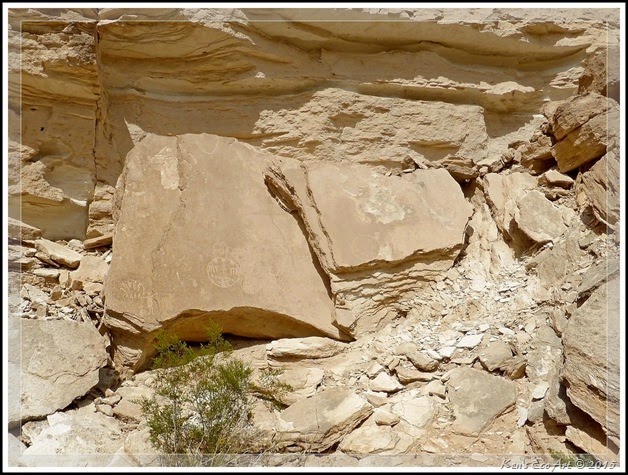 |
| (Fig. 31) |
|
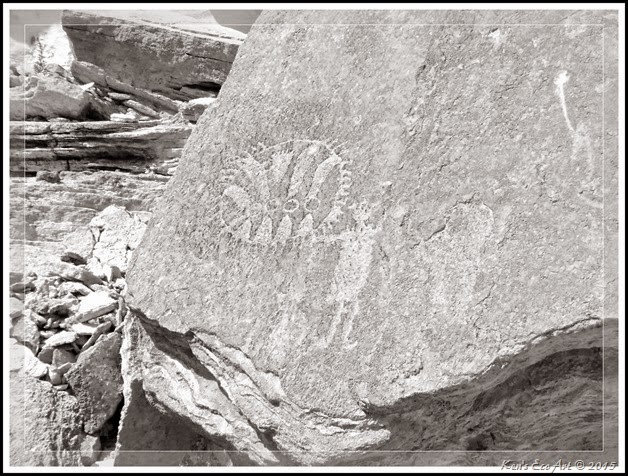 |
| (Fig. 32) |
|
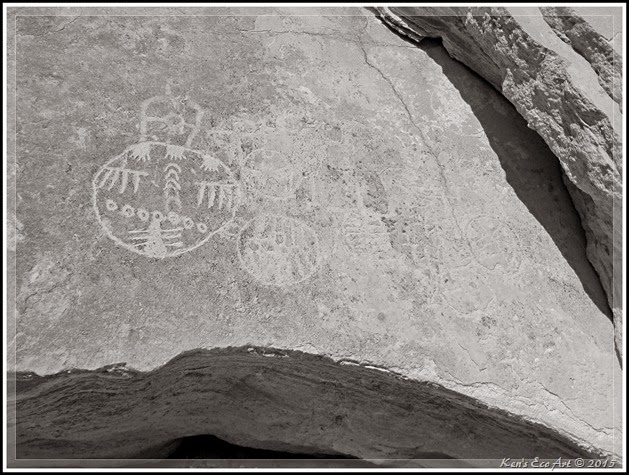 |
| (Fig. 33) |
|
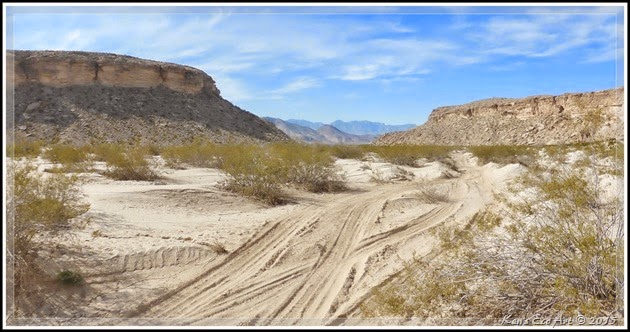 |
| (Fig. 34) |
|


































